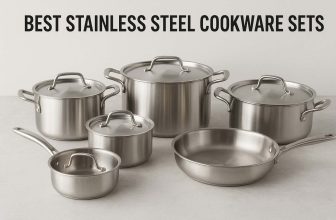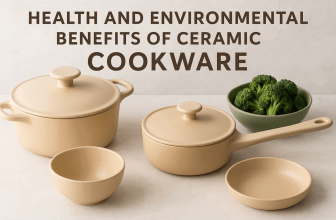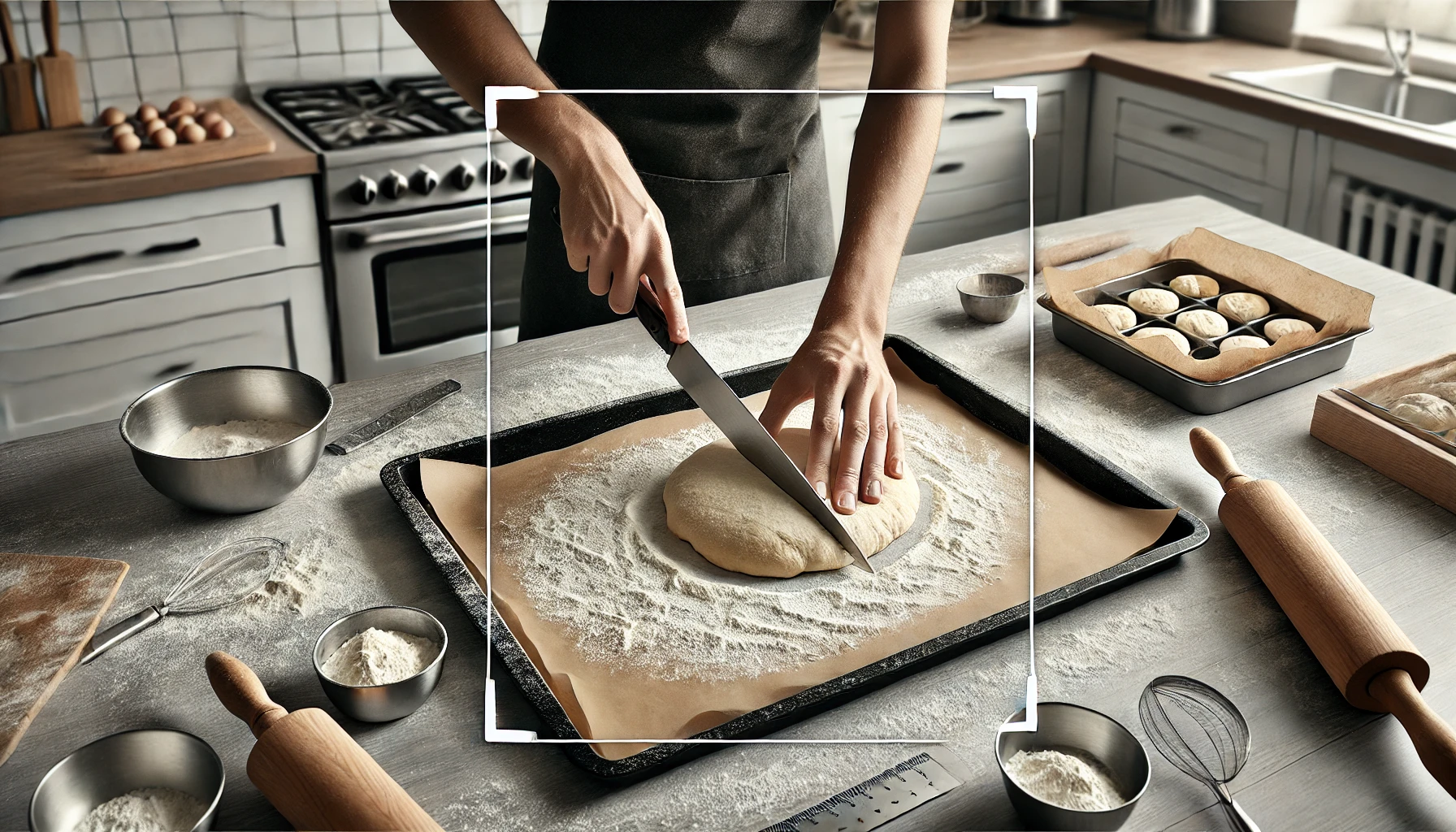Safe Non-Toxic Cookware Guide 2025
In recent years, the intersection of health awareness and culinary trends has begun to stir a conscious shift in kitchens around the world.

Embracing a healthier lifestyle extends into our kitchens where the cookware we choose is as important as the recipes we follow. The culinary world is abuzz with a growing preference for non-toxic, safe cookware options like ceramic, stainless steel, and cast iron, which align with a health-conscious ethos.
Cooking with the wrong cookware is like inviting chemicals to dinner – and nobody wants uninvited guests. In this guide, we’re diving into the world of non-toxic cookware, separating fact from fiction with a sprinkle of humor and a whole lot of useful info.
Understanding Non-Toxic Cookware
What is Toxic Cookware?
Toxic cookware might sound like something from a sci-fi movie, but it’s all too real. Cookware made with harmful chemicals like PFAS and PFOA can leach into your food, turning your culinary creations into chemical experiments.
So What is Non-Toxic Cookware?
Non-toxic cookware is your kitchen’s superhero. It’s free from harmful substances like PTFE and GenX and made to keep your meals clean, healthy, and safe.
Non-Toxic Cookware – Real or Hype?
Spoiler alert: it’s real. But with so many buzzwords on the market, it’s important to sift through the hype to find cookware that genuinely prioritizes your health.
The Dangers of PFAS, PFOA, PTFE, and GenX Chemicals in Cookware
Think of PFAS, PFOA, PTFE, and GenX chemicals like the unwanted guests at a dinner party. They show up uninvited, linger far too long, and leave a mess behind—except this mess isn’t just in your kitchen, but in your body and the environment. These so-called “forever chemicals” are used to make nonstick surfaces but can leach into your food over time. Opting for non-toxic cookware is like switching out a party crasher for a Michelin-starred chef—it makes everything healthier and way more enjoyable. Known as “forever chemicals,” these nasties can stick around in your body and the environment. Say goodbye to them by investing in non-toxic alternatives.
The Safest Cookware for Your Health
Stainless Steel: A Durable and Safe Choice
Stainless steel is like that reliable friend who’s always there for you. It’s durable, non-reactive, and perfect for all your cooking needs.
Pure Ceramic Cookware
If you’re after cookware that’s as pure as your intentions, go for ceramic. It’s non-reactive and free of coatings, making it a great option for health-conscious chefs.
Ceramic-Coated Nonstick Cookware
Ceramic-coated cookware offers the convenience of nonstick without the toxic trade-off. It’s a win-win for easy cooking and healthy meals.
Enamel-Coated Cast Iron Cookware
Combine the benefits of cast iron with a glossy, non-toxic enamel coating, and you’ve got a cookware superstar.
Carbon Steel: Achieving Nonstick Without Chemicals
Seasoned correctly, carbon steel provides a natural nonstick surface that’s chemical-free and highly versatile.
Stoneware and Its Benefits
Stoneware is durable, non-reactive, and a delight for baking enthusiasts.
The Truth About Aluminum and Copper Cookware
Unprotected aluminum and copper can leach into food, but when lined or treated properly, they’re safe options.
Choosing the Right Cookware for Your Needs
Think of cookware shopping as picking the right dance partner for your kitchen. Do you want someone who glides effortlessly (like a nonstick), or a strong, dependable lead (hello, cast iron)? Choosing the right cookware isn’t just about aesthetics—it’s about finding that perfect balance of functionality, safety, and compatibility with your cooking style. Imagine the frustration of trying to flip a pancake in a sticky pan or cooking soup in a pot that burns at the edges. Let’s break down the steps to make sure your next cookware partner doesn’t leave you regretting your choices.
Factors to Consider: Heat Retention, Stovetop Compatibility, and Durability
Pick cookware that suits your cooking style and kitchen setup. Consider factors like heat distribution, stovetop compatibility, and how long it’ll last.
How to Achieve Nonstick Results with Stainless Steel
Spoiler: it’s all about technique. Heat your pan, add oil, and let science do the rest.
Cleaning and Maintaining Your Cookware
Proper maintenance extends the life of your cookware. From seasoning cast iron to avoiding abrasive cleaners, a little care goes a long way.
Common Questions About Cookware Safety
Is Ceramic-Coated Cookware Non-Toxic and Safe?
Yes, when free of harmful chemicals like PFAS and PTFE.
Are There Any Nonstick Pans That Are Truly Non-Toxic?
Ceramic-coated options are your best bet.
Is Aluminum Cookware Safe to Cook With?
When lined or treated, aluminum is safe. Avoid bare aluminum for acidic foods.
Is Cooking With Traditional PTFE Nonstick Cookware Safe?
While convenient, it’s best to avoid PTFE nonstick pans due to potential chemical exposure.
Is Cooking With Cast Iron Safe?
Absolutely! It even adds a bit of iron to your diet.
Tips for Maximizing Cookware Longevity
Keeping your cookware in great shape is a bit like nurturing a relationship—it takes patience, care, and knowing what to avoid. To make it fun, here’s a humorous do-and-don’t list to keep your pots and pans happy:
Do:
- Treat it gently: Use silicone or wooden utensils. Think of it as giving your cookware a spa day every time you cook.
- Hand wash when necessary: Sure, the dishwasher is tempting, but some cookware prefers a little TLC by hand.
- Season your pans: Especially for cast iron and carbon steel. It’s like putting on a moisturizer—essential and makes everything better.
Don’t:
- Overheat it: High heat might seem like the fastest lane to flavor, but it’s a surefire way to ruin nonstick surfaces. Keep things medium and mellow.
- Use metal utensils on nonstick surfaces: Unless you enjoy the sound of nails on a chalkboard.
- Forget to dry it: Water spots aren’t just an eyesore; they can lead to rust or damage over time.
Think of your cookware as a trusted kitchen sidekick. With these tips, you’ll be flipping pancakes and simmering soups with the same trusty pots and pans for years to come!
How to Care for Non-Toxic Nonstick Cookware
Use gentle utensils and avoid high heat to keep your nonstick surfaces pristine.
Laura’s Cheat Sheet for Cooking With Non-Toxic Cookware
From choosing the right oils to proper cleaning techniques, these tips ensure your cookware stays in top shape.
Don’t sweat it! Our in-depth cookware reviews provide all the information you need to make an informed choice. Dive into our website to compare features, explore pros and cons of different materials, and find the perfect non-toxic cookware set for your kitchen!







